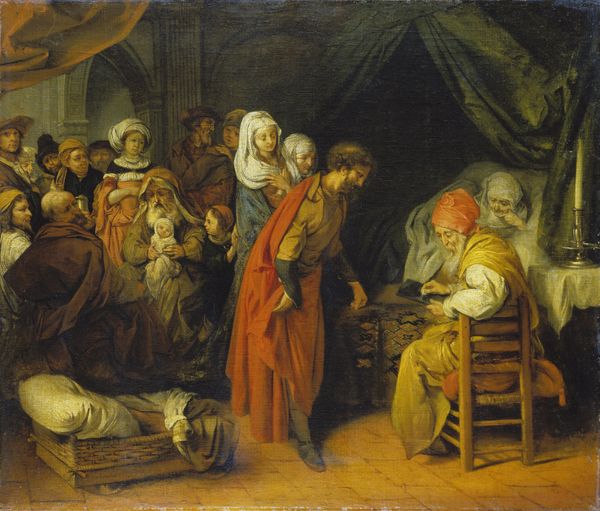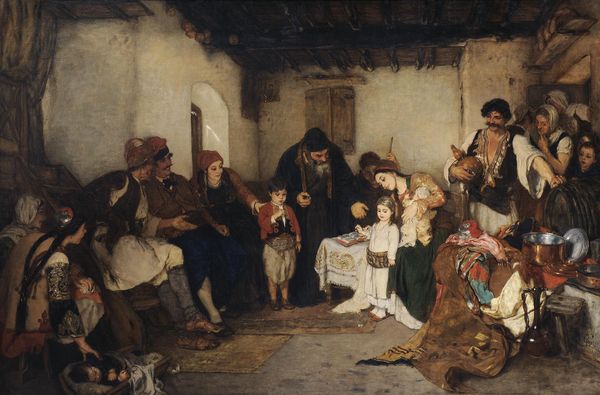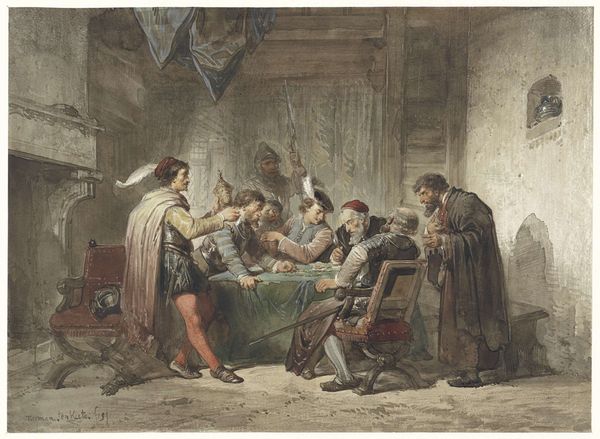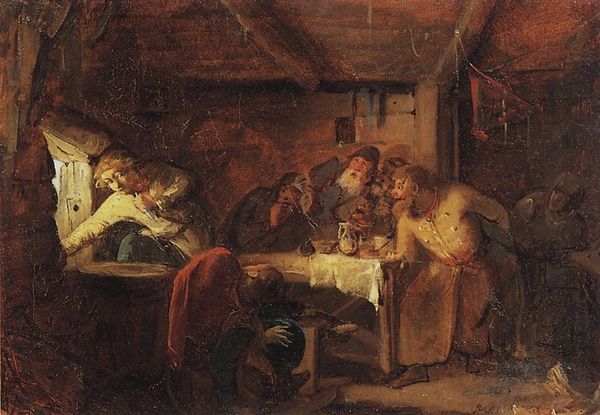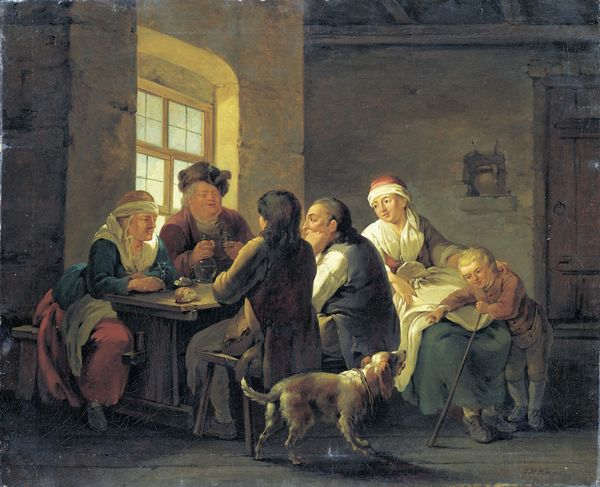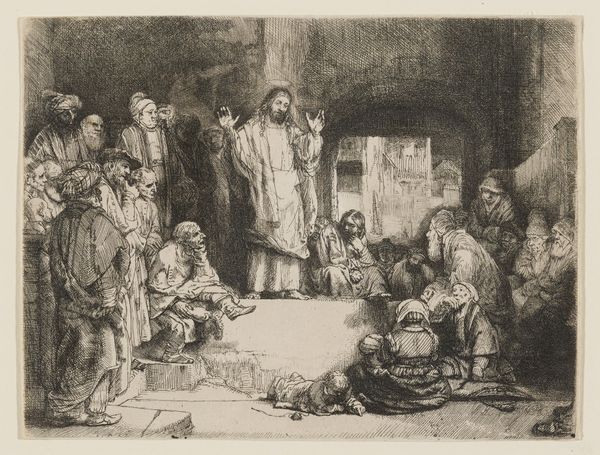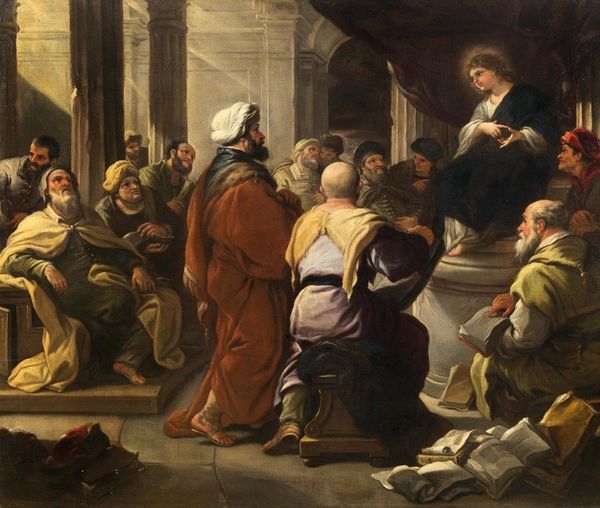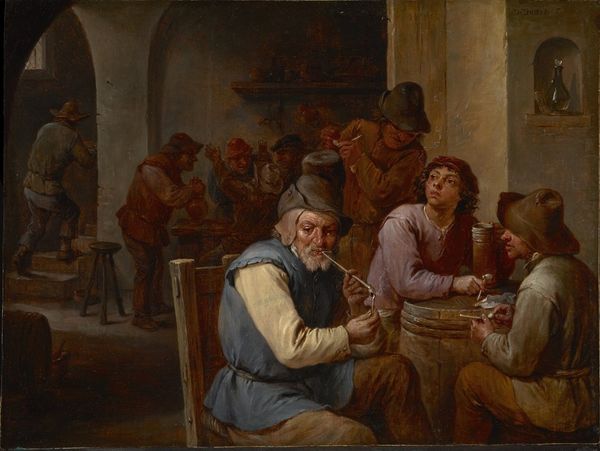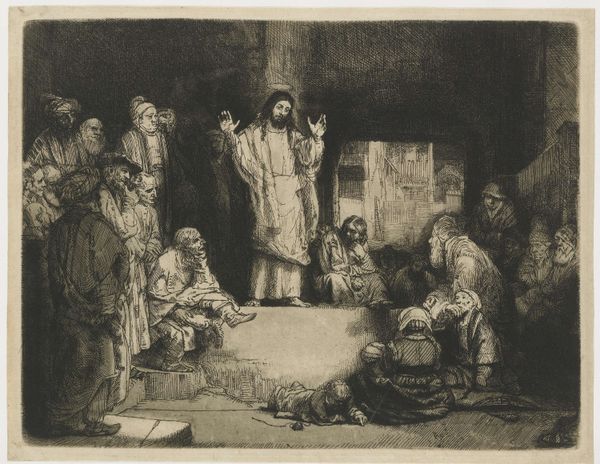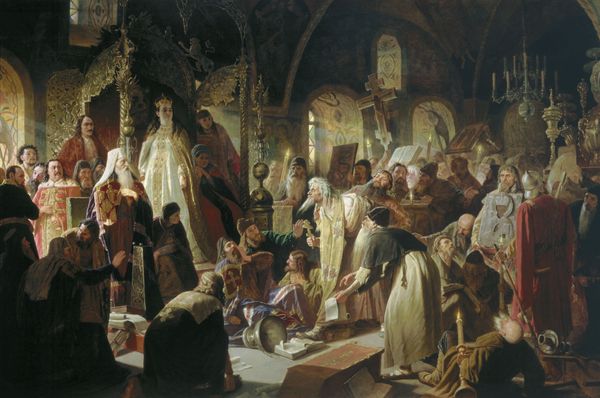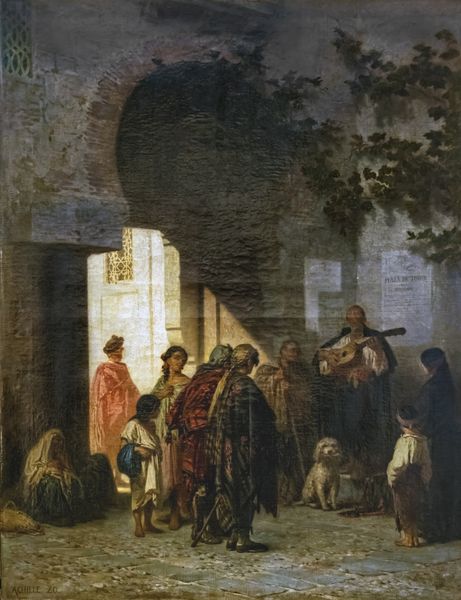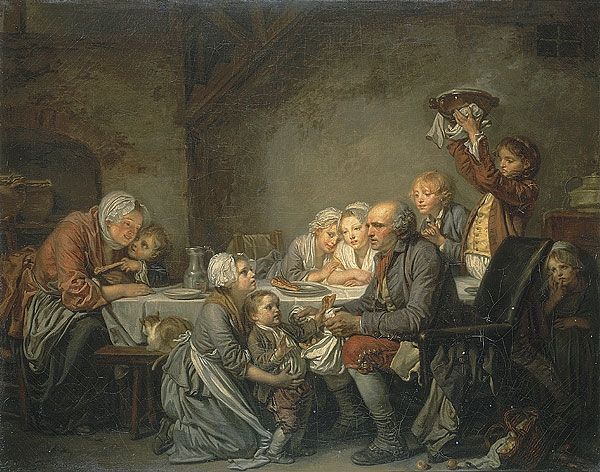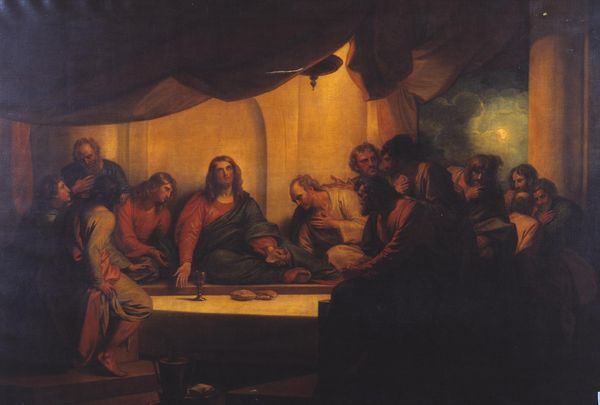
painting, oil-paint
#
gouache
#
figurative
#
painting
#
oil-paint
#
figuration
#
oil painting
#
romanticism
#
genre-painting
Copyright: Public Domain: Artvee
Curator: Here we have a painting attributed to Franz von Defregger titled "Aufruf zum Tiroler Aufstand," or "Call to the Tyrolean Uprising" rendered in oil. The exact date is unconfirmed. What are your initial thoughts? Editor: My eye is drawn to the intense chiaroscuro. The dramatic lighting throws the figures into sharp relief, creating an air of tense expectancy. It’s a study in contrasts, really, between light and shadow, calm discussion, and agitated outbursts. Curator: Right, and Defregger captures this pivotal moment within what looks like a tavern or meeting hall. The composition draws us into the room, showcasing the figures and materials indicative of the historical setting. Consider the garments, the rough wooden furniture, and the humble jugs and glasses. Editor: Indeed. It seems to stage a pivotal moment. The orator standing and addressing the crowd, arm raised in what I assume is a call to action… There's a potent gestural language employed that channels both resolve and perhaps desperation. Look at the way the figures respond—a flurry of movement and raised fists versus the stillness of those at the table. Curator: Considering the painting's title, the garments worn by those depicted reflect both regional pride and economic status, revealing details about the participants in this uprising. Defregger presents to us a group assembled from various stations of life who were engaged in local political struggles. Editor: And Defregger’s brushwork! Quick, expressive strokes animate the scene, particularly noticeable in the rendering of the faces and clothing folds. You get a real sense of movement. This wasn't meant to be a polished academic exercise; it pulses with an inner vitality that speaks to the urgency of the depicted events. Curator: Exactly. Beyond the aesthetics, the artist has used readily available oil paints of the time on a stretched canvas – highlighting resource constraints, and this work acts as both a representation of and an appeal towards local identity in an era when rising nationalism and romantic interests in "the people" affected how we viewed art's creation and distribution. Editor: So, beyond historical record and cultural depiction, it uses classical techniques of composition, color and dramatic framing to evoke, quite successfully, a mood that continues to captivate. Curator: Through brushstrokes and choices of materials, context echoes loudly. Editor: Definitely resonates well beyond the surface.
Comments
No comments
Be the first to comment and join the conversation on the ultimate creative platform.
